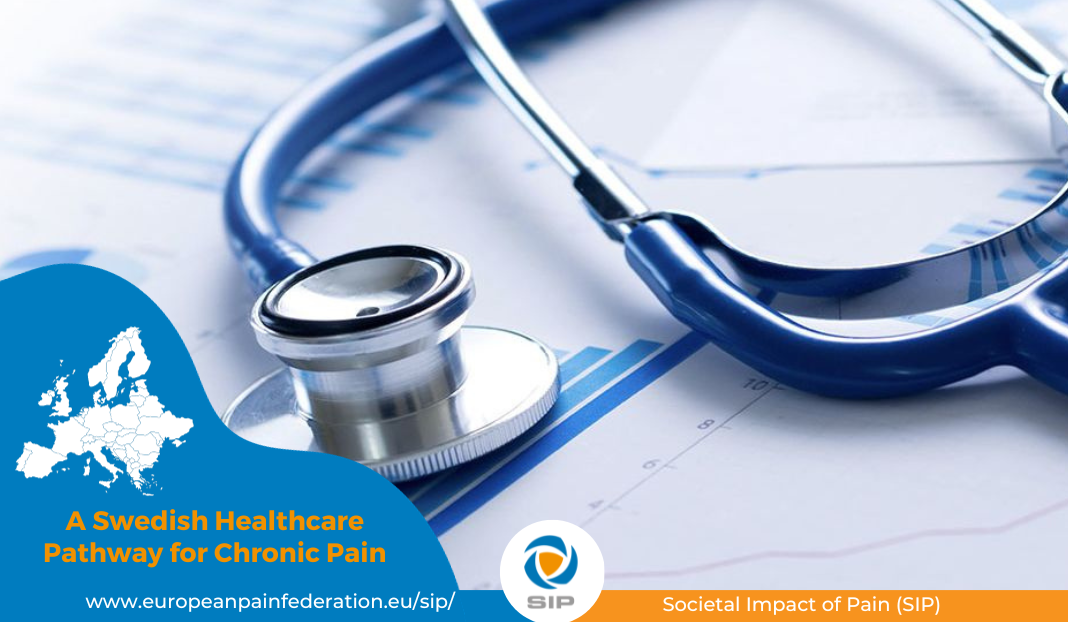On November 28th, during the SIP National Platform Meeting, Monika Löfgren and Gunilla Göran, members of the Swedish Task Force for Chronic Pain, delivered a comprehensive presentation on the recently launched Swedish National Healthcare Pathway for Chronic Pain in adults.
The National System for knowledge-driven management within Swedish healthcare plays a pivotal role in spearheading the development of person-centered and coherent healthcare pathways. Specifically, the pathway for chronic pain has been meticulously crafted under the umbrella of the National Programme Area of Diseases of the Nervous System.
This comprehensive document emerged through the collaborative efforts of a national task force, initiated in 2019. The task force comprised representatives from patient organisations, various health professions, diverse regions, and different levels of care, ensuring a well-rounded and inclusive approach.
The culmination of this collaborative endeavor resulted in the approval of the Pathway for Chronic Pain by the National Programme Area of Diseases of the Nervous System in October 2022. The ongoing focus now lies in the regional implementation of this approved pathway, marking a significant stride towards enhancing the management of chronic pain within the Swedish healthcare system.
Why a Pathway for Chronic Pain in Adults?
- It often causes great suffering to the individual and is a major public health problem globally.
- Managing and care suffers from deficits and inequalities.
- Patients’ organisations find the care unequal, with deficits in personal meetings, accessibility and professionals’ competencies regardless of the level of care.
- Patients and professions are often discontent with the personal encounter.
- Chronic pain is together with psychological health the cause of most sick-leave absences.
- An early, adequate investigation and promptly evidence-based interventions, with an overall perspective, counteracts high levels of care seeking and supports return to social life and activities.
The healthcare pathway begins due to pain lasting at least 3 months or at risk of developing into chronic pain, and concludes when the patient can manage the situation without requiring additional healthcare support.
The overall aim of the care pathway is to empower healthcare professionals in delivering a proficient level of care and administering evidence-based treatments for adult patients experiencing chronic pain.
Main Aims:
- Enhance the quality of life for patients.
- Foster increased continuity and safety for patients during and between care contacts, as well as collaboration between healthcare professionals.
- Elevate the proportion of patients capable of managing their pain early on without the need for further care measures.
- Promote heightened collaboration within and between levels of care, guided by the referrer in consultation with the patient.
- Augment knowledge among healthcare professionals and patients in the realm of chronic pain, grounded in evidence and proven experience.
- Mitigate costs for individuals, the healthcare system, and society as a whole.
The proposed outcome indicators are linked to the domains recommended for scientific monitoring of this patient group, such as IMMPACT’s and VAPAIN’s. Follow-up forms are available for several of these. Important domains in the clinical context include pain intensity, physical function, sleep disturbance, anxiety, depression, fatigue, and ability to participate in social activities and have social roles, establishing a rehabilitation plan and a contact person early during the pathway.
Indicators are primarily choosen to be collected from the Swedish Quality Registry of Pain Rehabilitation (SQRP) and some data can also be collected from Regional registries.
Implementation Implications:
The implementation of the pathway entails significant consequences, primarily for primary care and, to some extent, for specialised care. The adoption of new working methods, healthcare organisational changes, and knowledge development will be imperative. In the short term, these initiatives may lead to increased costs and a heightened demand for resources.
However, the positive impacts are anticipated to outweigh the initial challenges:
- Avoidance of non-valuable healthcare, making it easier to define the appropriate level of care.
- Over the longer term (within 5 years), early interventions and an enhanced structure are expected to result in fewer healthcare visits, leading to lower costs for individuals, healthcare, and society. Significant cost savings are likely to materialise over an extended period.
- It’s essential to note that the calculations do not account for ongoing digitalisation projects within the pathway. The implementation of these digital initiatives may further contribute to decreased healthcare costs.
Patients Benefits:
- Continuity for the patients who often are in need of multiple measures from different professionals and often in cooperation with employer and authorities.
- Support beneficial healthcare meetings by decreasing the numbers of unnecessary revisits and increase cooperation between levels of care and healthcare professionals.
- Increase healthcare professionals’ and patients’ knowledge of chronic pain with the aim to improve the quality of healthcare meetings.
- Support patients without taking over his/her own responsibility, by creating a rehabilitation plan in dialogue between the healthcare professional and the patient and by offering the patient both support and guidance in contacts, measures and own care.
